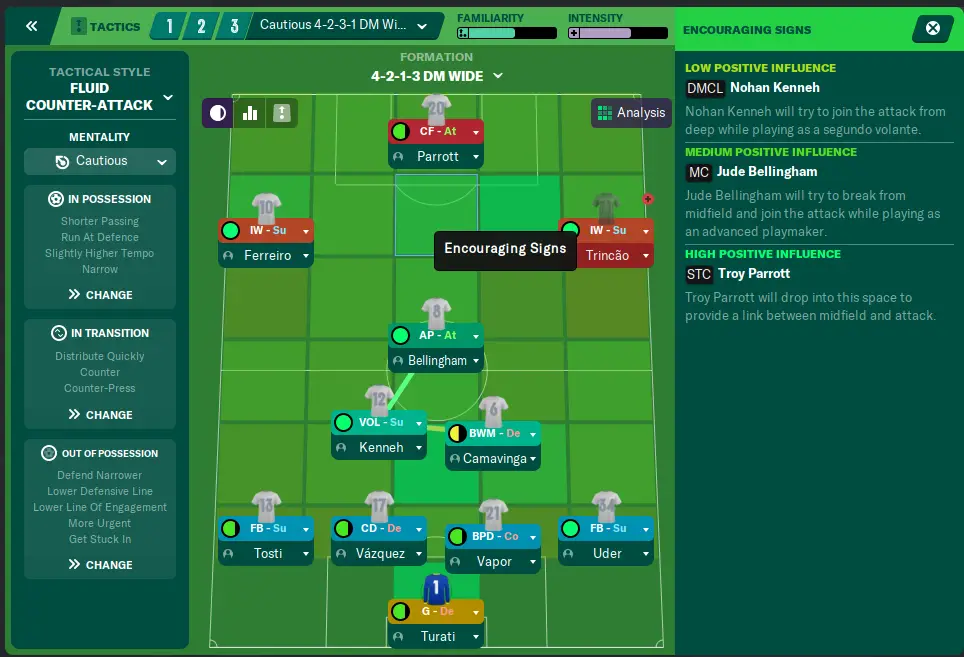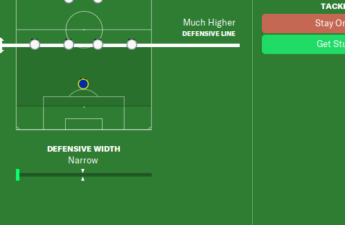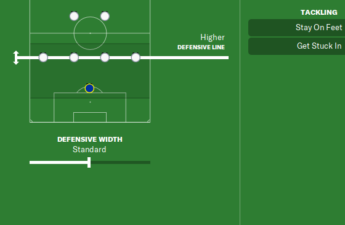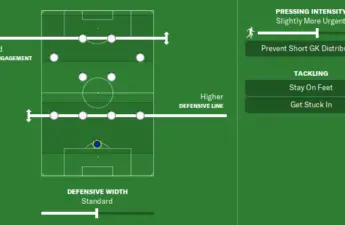The basic idea of overlapping and underlapping is easy to understand. An overlap involves a marauding player making a run on the outside of a winger, while an underlap involves making the same marauding run but in the central areas of the pitch.
Setting up a balanced system that makes your attack tick correctly, in addition to balancing your players’ mentalities and the team instruction to underlap or overlap, is where it can be a little tricky in FM.
A common misconception is thinking that ticking the underlap or overlap instruction triggers the forward runs of your fullbacks or central midfielders.

What ticking the instruction does, is only ask your wide players, to hold on to the ball for a little while longer than normal, to give time to the players from the back to either make their overlapping or underlapping runs depending on the roles you have assigned them.
If they are in very risk-averse roles like the no-nonsense fullback or central midfielder on defend duty, then the overlapping or underlapping runs will never come.
The instruction will instead only serve to slow down the speed of your team’s attack
Underlap Right or Left In FM
Football manager describes an underlap as a team instruction that asks players on the flanks to hold on to the ball and, rather than waiting for a player to arrive from deep with an overlapping run, instead look to a teammate making a run inside and beyond them.
This makes the instruction useful if your team’s strength is in the central areas of the pitch for getting the ball to this area as often as possible.
In the same vein, it can be used as a viable strategy if your opponent’s midfield is not as strong as their fullback positions.
To effectively create an overload on one side of the field, you can have a mezzala or an advanced playmaker be joined in the final third by your inverted wing back, who will routinely make these inward runs.
The winger, or inverted winger on this side of the field depending on the role you choose, will then intentionally look to hold the ball for a while before playing inwards where hopefully your advanced playmaker or mezzala together with the fullback will effectively break down the opposition’s backline with their intricate passing and sharp movement.
If your opposition’s midfield is packed with an anchorman or a ball winning midfielder in the defensive midfield position, then looking to take advantage of this area with an underlap might not be such a good idea.
It can work if you have high-quality players that can play through the strong central areas, however, the most sensible solution is to give up this route and try other means to breach the opposition’s defence.
However, if there is space, the key is to make sure you have enough players making runs in the central areas from deep.
Therefore, roles like that of the deep lying playmaker, central midfielder on support duty and ball winning midfielder on defend duty will not serve you effectively here.
Instead, opt for roles like that of the mezzala, advanced playmaker, box-to-box midfielder and roaming playmaker. These roles will give your wide players more passing options, making your attack fluid and difficult for the opposition to deal with.
Overlap Right or Left In FM
Football manager describes the overlap as a team instruction that asks players on the flanks to hold on to the ball and look for an overlapping player in support, most likely a marauding full back.
The overlap is more straightforward in getting it right, as it largely only affects the full back and the winger.
Adding the instruction is an effective way of getting your full back more involved in the attack despite using slightly more risk-averse roles like a full back on support duty, compared to say a wing back or complete wing back.
For possession-based teams, you can use the instruction to slow down your game, as you wait for the full back to get in position before you can use him to stretch the play.
In this scenario, coupling the overlapping instruction with a wide attacking width is a sensible choice to have the fullback stretch the opposition’s backline in the very wide areas of the pitch, from where he can easily send in crosses to your complete forward or poacher.
To prevent your full back and winger from operating in the same area of the pitch, have your winger in a role that encourages him to drift inwards, like that of an inside forward, inverted winger or even a raumdeuter.
This way, you’ll have your full back providing the width, while your wide player makes a run into the opposition’s 18-yard box and becomes another body that can meet the fullback’s cross or cut back.
Finally, when using the overlap, ensure you have a player in place, preferable a defensive midfielder in the mould of a halfback or anchorman, who will thwart the opposition’s threat on the counterattack when your fullbacks are committed to the team’s attack.


